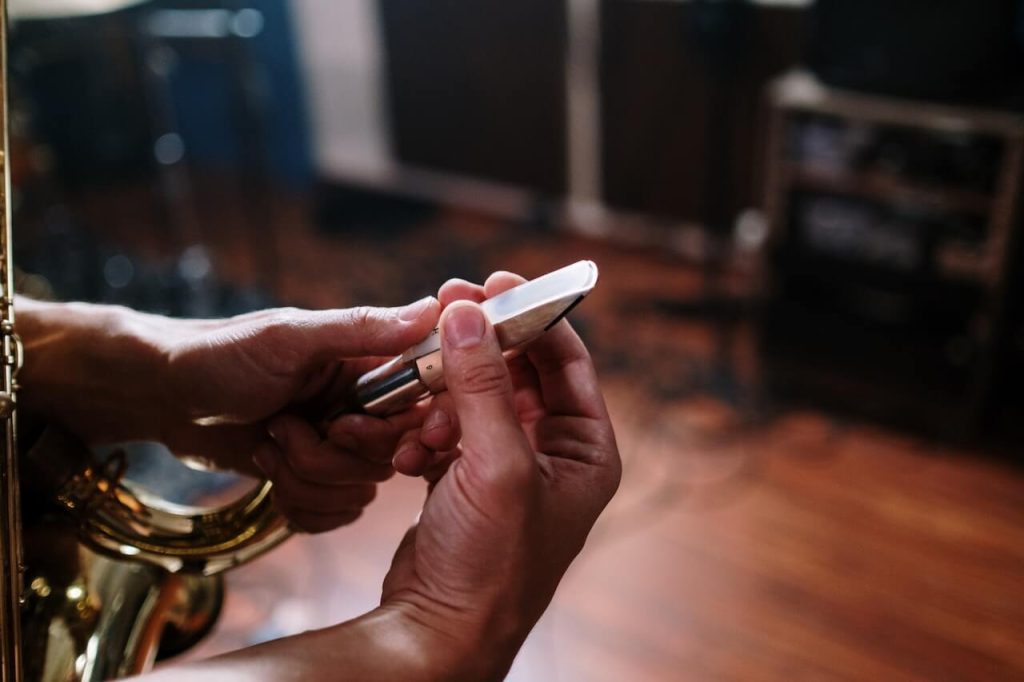Reed instruments are a type of woodwind instrument that produces sound when air is blown across the narrow opening at one end.
Reeds are used in many different types of music, but they are most commonly associated with the Western classical tradition. The most common type of reed used in this context is the clarinet. Other reeds include oboe, bassoon, saxophone, and bagpipes.
The earliest known examples of reeds date back to ancient Egypt and Rome. Reed instruments have been found as far back as 2000 BC in China and 1200 BC in Greece.
The term “reed” is derived from the Old English word “rǣd”, cognate with the Old Norse word “reið”, meaning forked piece of wood. Another possible source of the term comes from a Proto-Germanic language, *”raid-/*radja”- which meant to fasten, tie or sew.
Many reeds are cut from strips of cane (such as bamboo), and others are made from synthetic materials such as plastic,
Reed Care & Cleaning Tips
Cleaning your reed is a vital part of the process of playing an instrument. If you do not clean your reed, it will be difficult to play, and it will also damage the quality of sound that you produce.
To clean your reed, use a dry cloth or tissue paper to wipe off any excess saliva or moisture from the surface.
Then use a cloth moistened with water and gentle soap to remove any dirt and grime from the inside of the reed.
Finally, place your wetted cloth on top of the dry cloth and gently rub both in opposite directions to remove any remaining dirt from the surfaces.
The best way to store a reed is by wrapping it in either tissue paper or cling film before placing it in its case.
5 Essential Reed Setup Tips You Shouldn’t Ignore
These 5 essential saxophone reed setup tips you should not be ignore by any saxophone player:
1. Start with a fresh and clean mouthpiece.
2. Use a good quality ligature that fits your mouthpiece well.
3. The most important thing to do is to make sure the reed is wet and moist before putting it in your mouthpiece – this can help prevent problems like warping and cracking of the reed while also increasing its lifespan by up to 50%.
4. Make sure that the cut-off point of your reed is at least 1/8 inch from the tip of your mouthpiece so that you have enough room for a proper embouchure and air flow without risking damage to the tip of your mouthpiece or scraping against it as you play.
5. Be sure to trim off any excess cane from either side of the reed, which can cause unevenness in vibration and tone quality when playing on a metal mouthpiece.
How to Choose Your Favorite Reeds
Choosing reeds is an important part of playing the saxophone. If you are looking for a new set of reeds, there are many things to consider before making a purchase.
Some things to keep in mind when choosing reeds are:
– The size and shape of the mouthpiece opening
– The type and thickness of the reed
– The strength and flexibility of the reed
– The material that the reed is made from
– Your budget
The Best Saxophone Reed Brands
There are many saxophone reeds on the market, but only a few are worth your time and money. The most important thing to consider when buying saxophone reeds is what type of music you play. Some reeds work better for classical music while others work better for jazz or blues.
The best saxophone reeds will allow you to play with an even tone, have a nice response, and produce rich sound. You should also be able to control the reed well in all registers of the saxophone.
Here are some of the top saxophone reed brands available:
Vandoren
The Van Doren family spent eleven decades refining the concept of the perfect reed. During that time, the name became synonymous with quality, endurance, performance, and tone. Furthermore, they are the preferred choice of many musicians worldwide.
The business is now run by the fourth generation of Van Dorens. The company has expanded so substantially that it now exports high-quality products to over 100 countries. Furthermore, this accounts for 90% of its output.
D’Addario
D’addario is not only one of the world’s largest string makers, but also one of the world’s largest accessory manufacturers.
They sell a wide range of equipment intended at making musicians’ lives easier, from music-specific backpacks to cutting-edge reeds.
Légère
These reeds represent the next phase in the evolution of Légère reeds. They mix the Signature cut’s sharp, rapid reactivity and edgy tone with some of the Classical Légère reeds’ low-end. In this regard, these are well-balanced reeds that play easily, sound vibrant, and have personality.
Finally, due to their distinct contour, the low register sounds full and round while remaining clear, whereas the altissimo emanates brilliance and vibrancy. Give them a shot if you haven’t already; they could surprise you.
Fiberreed
This reed is comprised of high-quality hollow fiber that has been laminated with hemp fiber and capped with multiple layers of hardwood. Furthermore, the cut is designed to accentuate the natural tonal benefits of hemp. This wood keeps the bass end, giving the instrument an earthy, dark tone.
The remaining component of the composite, on the other hand (80% hemp, 20% synthetics), provides it a full high register with colorful harmonics and an altissimo range.
Fibracell
These reeds may meet the needs of any Saxophone player, regardless of style, with a traditional woody tone you’d expect from real cane reeds with remarkable projection.
They have a bright, rapid response with lovely harmonic overtones over a resonant tone that always keeps the bass end.
Even though they sound very close to wood, these reeds are made of Fibracell, which means they are unaffected by weather and last four times as long.
Rigotti
The product has many diverse features because the reeds are cut from wild canes. They are, for example, a different color than you would expect.
They also have a thicker tip, which makes them last longer than others. Furthermore, for jazz fans who need to pierce through the band, these reeds provide a brighter, punchier sound that is ideal for modern jazz.
Furthermore, the rich harmonic overtones and balanced tone make this instrument ideal for big ensembles and even orchestral work.

